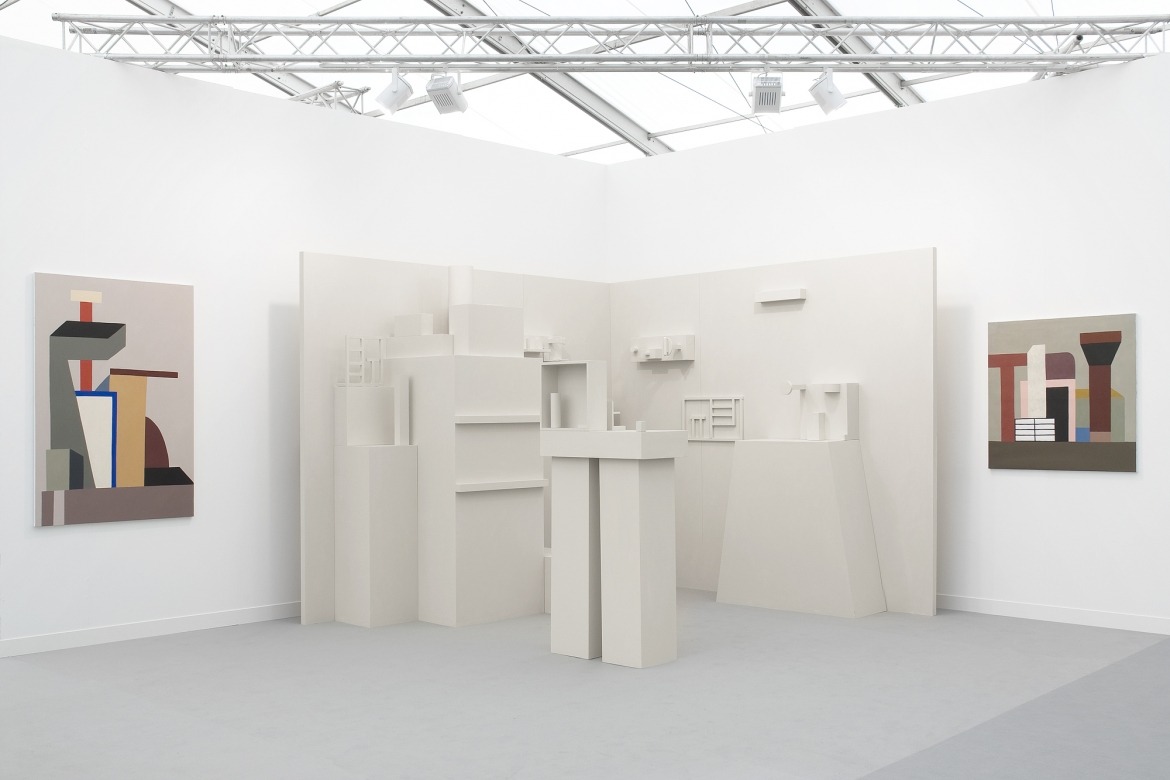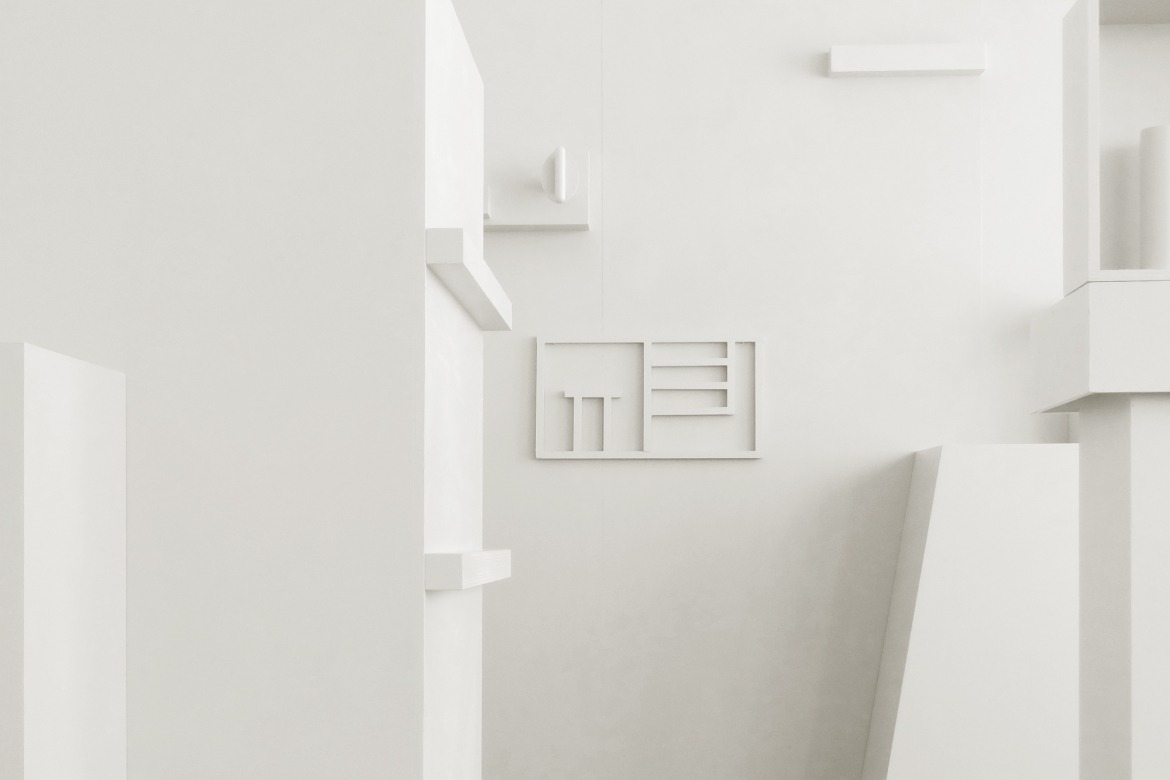



For Frieze London EXILE is pleased to present a specifically created room environment by artist Nathalie Du Pasquier. This room, entitled White model for a big still life, consisting of various sculptural and architectural elements, blurs the lines between environment, architecture, painting and installation by creating a monochrome space that functions, in a sense, like the artist’s own creative mindscape.
White model for a big still life subsumes two-, to three-dimensionality (or vice versa) with the walls of the room extending into the space while sculptural constructions within the room extend spatially towards the walls. Adjacent, her paintings reflect through their formal, multicolor arrangement back upon the monochrome reduction of White model for a big still life.
Nathalie Du Pasquier began her career as a founding member of the design group Memphis in Milan. Operating from 1980-1988, Du Pasquier was one of the very few women members of the group and formed a legacy that remains onmipresent in today’s visual culture. In 1986, Du Pasquier left the group to focus on her artistic practice. By encompassing a variety of approaches, Du Pasquier has created a unique universe ranging from the smallest designs for a pencil, to elaborately crafted oil paintings and monumental sculptural environments.
Concurrently, Du Pasquier holds a comprehensive survey exhibition at Kunsthalle Vienna entitled Big objects not always silent featuring works from 1980 until today. The artist also holds her second solo exhibition entitled Meteories & Constructions II at the gallery, on view until Oct 8.
Frieze Focus. Booth H30.
Click here to view Big objects not always silent at Kunsthalle Vienna
Click here to view Meteorites & Constructions II at EXILE
White model for a big still life
By Nathalie Du Pasquier
In fact i don’t think this is a model, I am not going to represent it, it is too big. But the title comes from the fact that in origin my constructions were built as models for very realistic paintings. These paintings were called still life because the model did not move, because the model was just an object even if the final painting had the look of an abstract work, it was just the model that was abstract, not the painting. In origin….time has gone by and now only occasionally, do I still represent my constructions. In this period the built constructions exist by themselves and the paintings don’t represent any existing constructions anymore.
The constructions, and this one in particular which has taken the shape and size of a room, are made of elements which often arrive from previous installations or constructions. For the one presented at Frieze, some parts of it have been repainted many times, some are quite complex and some are just simple volumes. Many have been parts of other installations. This is the way these pieces of wood exist in my studio. Raw material that is used according to my needs. It could be said that this piece, if not sold, will turn into something else. And unless some one takes it away from the studio it is a non-permanent installation. Like any room in fact.
As in nature, as in life, there is a constant recycling of ‘materia’. In the studio, ideas which have appeared years ago can re-emerge today in a different shape or as part of a more complex work. With the wooden pieces it is the same and what is built with them is not an eternal shape but maybe just a temporary incarnation.
In the exhibition held concurrently at Kunsthalle Vienna, there is a sister of that piece. Both these ‘rooms’ have been conceived around the same time. Both pieces are monochrome ambients, in a dull indefinite color. Both pieces evoke silence, evoke the mystery of useless machines open to any interpretation and ready to generate something else. The one in Vienna will be disassembled in a few weeks, this one might be the only one to survive.

